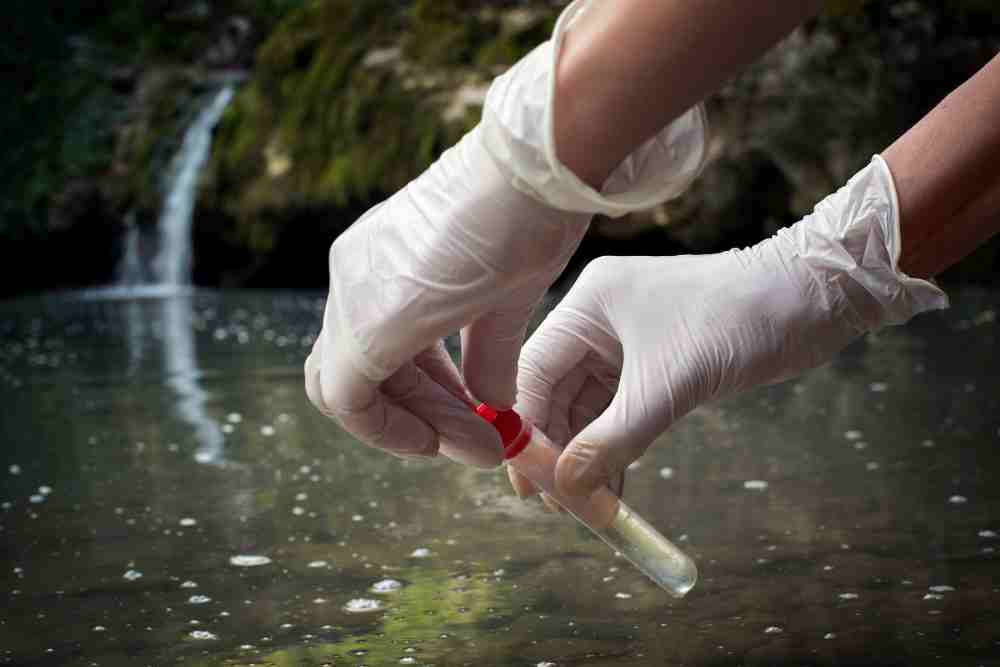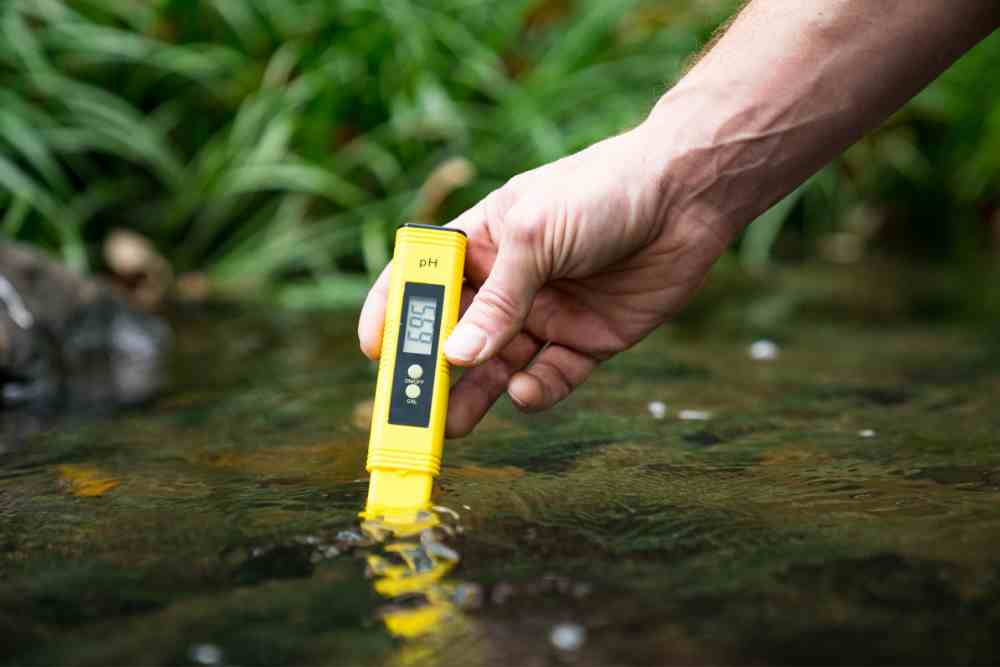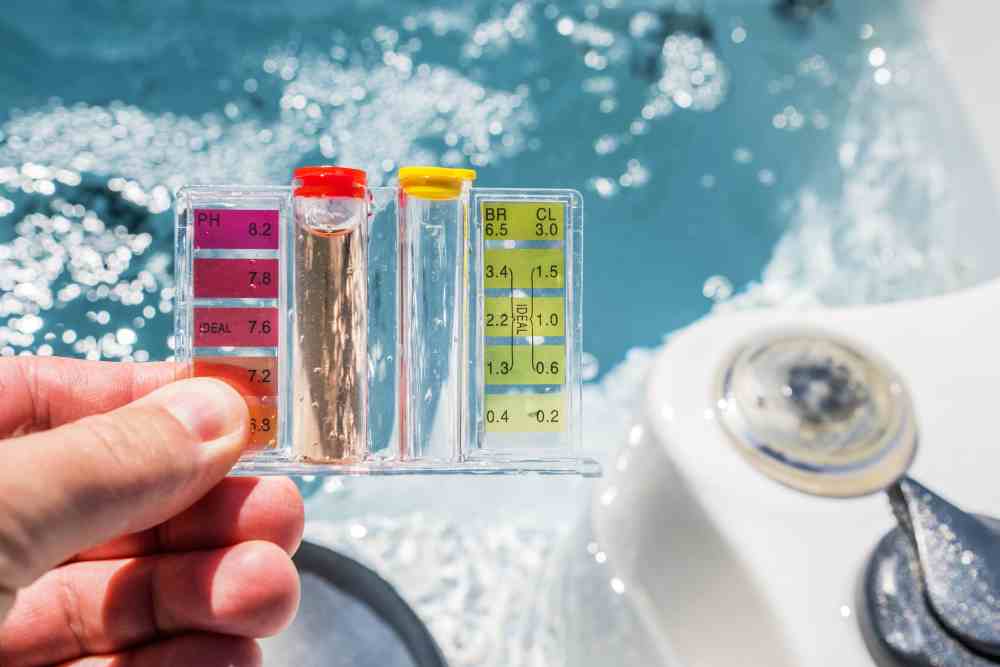Assessing pond water quality is crucial for sustaining a healthy and thriving aquatic habitat. A pond water test kit is a vital tool that allows pond owners, amateurs, and professionals to evaluate numerous parameters.
This also aids in making informed judgments about water management. A high-quality pond water test kit measures critical water parameters like pH, ammonia, nitrite, nitrate, dissolved oxygen, and more.
With so many different test kits on the market, deciding on the right one can be difficult.
This article will introduce you to the best pond water test kits that provide accurate and dependable results, allowing you to maintain optimal conditions for your pond’s inhabitants and plants.

What is Water Quality Parameters
Water quality parameters are specific characteristics or properties of water that are used to assess its overall quality and health. In the case of pond water, several parameters are commonly used to evaluate its quality. Here is a list of some important pond water quality parameters:
Temperature: The measurement of water temperature can indicate the overall health and biological activity of a pond.
pH Level: pH is a measure of the acidity or alkalinity of the water. It is crucial for the survival of aquatic organisms and the effectiveness of chemical processes in the pond.
Dissolved Oxygen (DO) Level: DO refers to the amount of oxygen dissolved in water, which is essential for the survival of aquatic plants and animals.
Turbidity: Turbidity measures the clarity of the water by determining the presence of suspended particles or sediment. It affects the penetration of light, which can impact the growth of aquatic plants.
Total Dissolved Solids (TDS): TDS measures the concentration of inorganic substances dissolved in water, such as salts, minerals, and metals. High TDS levels can negatively impact aquatic life.
Ammonia and Nitrate Levels: These parameters are indicators of nutrient levels in the water. Excessive amounts of ammonia and nitrate can lead to algal blooms and imbalances in the pond ecosystem.
Alkalinity: Alkalinity measures the water’s buffering capacity, which determines its ability to resist changes in pH. It is essential for maintaining a stable aquatic environment.
Biological Oxygen Demand (BOD): BOD measures the amount of dissolved oxygen required by microorganisms to decompose organic matter in the water. High BOD levels indicate pollution or excessive organic material in the pond.
Nutrient Levels (Phosphates, Nitrites): These parameters measure the concentration of nutrients, such as phosphates and nitrites, which can affect the growth of aquatic plants and algae.
Chlorine and Chloramine Levels: These disinfectants are commonly used in tap water. Monitoring their levels in pond water is crucial, as high concentrations can be harmful to aquatic life.
Factors Affecting Water Quality Parameters
Several factors can disturb the optimum concentration of pond water quality parameters. These factors can arise from natural processes, human activities, or a combination of both.
Here are some common factors that can disrupt the ideal levels of pond water quality parameters:
1. Pollution
Pollution from various sources, such as agricultural runoff, industrial discharges, or urban runoff, can introduce pollutants into pond water.
These pollutants can include chemicals, heavy metals, nutrients, pesticides, and other harmful substances, which can alter the water quality parameters.
2. Nutrient Enrichment
Excessive nutrient inputs, primarily from fertilizers or sewage, can lead to eutrophication. This process causes an overabundance of nutrients in the water, promoting excessive algal growth.
Algal blooms can deplete dissolved oxygen, increase turbidity, and disrupt the balance of the pond ecosystem.
3. pH Imbalances
Factors such as acid rain, runoff from construction sites, or the introduction of acidic or alkaline substances can alter the pH levels of pond water.
Extreme pH levels can be detrimental to aquatic life, affecting their health and reproductive capabilities.
4. Temperature Fluctuations
Natural factors like seasonal changes or human activities such as water extraction can lead to temperature fluctuations in pond water.
Drastic temperature changes can stress aquatic organisms and disrupt their metabolic processes.
5. Sedimentation
Sedimentation refers to the accumulation of sediment, silt, or debris at the bottom of the pond.
Excessive sedimentation can increase turbidity, reduce light penetration, and impact the growth of aquatic plants.
It can also release nutrients and pollutants into the water column, affecting other water quality parameters.
6. Algal Blooms
Excessive nutrient levels combined with favorable environmental conditions can lead to algal blooms.
These blooms can deplete oxygen levels, release toxins, and create imbalances in the pond ecosystem.
7. Runoff and Erosion
Runoff from nearby land, especially during rainfall events, can carry soil particles, chemicals, and other pollutants into the pond.
Erosion caused by human activities, such as construction or deforestation, can accelerate sediment and pollutant runoff.
8. Aquatic Life and Biological Processes
The presence and activities of aquatic organisms can influence water quality parameters. For example, excessive fish populations can contribute to nutrient loading through their waste.
Similarly, decomposition of organic matter by bacteria and other microorganisms can affect parameters like dissolved oxygen and BOD.
9. Climate Change
Climate change can lead to shifts in precipitation patterns, temperature, and hydrological cycles.
These changes can impact water availability, water temperature, and nutrient dynamics, affecting the overall water quality of ponds.
Why Pond Water Quality Testing is Important

Pond water testing is important for various reasons, including monitoring and maintaining the general health and balance of the pond ecosystem.
Here are some of the main reasons why pond water testing is important:
1. Water Quality Evaluation
Testing the water helps you to examine its quality and ensure that it satisfies the parameters required for aquatic life’s survival. pH, ammonia, nitrite, nitrate, dissolved oxygen, and temperature are all important indicators of overall water quality.
Imbalances in these factors can have a negative impact on the health of the pond’s fish, plants, and other species.
2. Fish and Plant Health
Fish and plant health are dependent on particular water conditions to survive. Regular testing allows you to keep track of dangerous compounds such as ammonia, nitrite, and nitrate, which can be poisonous to fish and limit plant growth.
You can take appropriate corrective action by spotting any imbalances or variations in these metrics. While keeping your pond’s inhabitants in good health.
3. Early Issue Detection and Disease Avoidance
Anxiety can be caused by poor water quality, rendering fish more susceptible to illnesses and infections. A proactive and preventive approach to pond management begins with regular water testing.
Monitoring water quality allows you to spot possible problems before they become severe, allowing you to take corrective action in a timely manner. This contributes to a stable and balanced pond habitat.
4. Algae Control
Excessive growth of algae is a typical concern in ponds, disrupting the ecological balance and affecting water quality.
Nitrate and phosphate levels in the water are being measured. This allows you to keep track of the nutrient levels that contribute to algae formation.
By controlling nutrient levels and implementing suitable procedures such as nutrient reduction or the addition of beneficial microbes. You can keep your pond looking good and healthy by preventing excessive algae growth.
Algae blooms are a common problem in ponds, and water testing can assist in managing this issue.
Testing for parameters like phosphate and nitrate can help you understand the nutrient levels in the water, which are often responsible for excessive algae growth. By addressing nutrient imbalances, you can effectively control and prevent algal blooms.
5. Overall Pond Balance
Water parameter testing provides information on the overall balance of the pond ecosystem.
It enables you to assess the relationships between various components. such as fish, plants, and beneficial microbes, and make necessary modifications. You may produce a thriving and sustainable pond by maintaining the proper balance.
6. Weather and Seasonal Effects
The water chemistry and quality of your pond can be affected by changes in weather and seasons.
Heavy rainfall, for example, can dilute the pond water, changing its pH and nutrient levels. Testing at different times of the year allows you to adjust your pond management strategies properly.
Best Pond Water Test Kits
The best pond water test kit is determined by several aspects, including the exact characteristics you want to test, the convenience of use, accuracy, and budget.
While I can offer you a list of well-known and well-respected pond water test kits. Furthermore, before making a final decision, it must be crucial to evaluate your individual wants and preferences.
The following are some of the best pond water test kits on the market:
1. Water Test Kits
API Pond Master Water Test Kit
For accurate ammonia testing, the API Pond Master water test kit is highly recommended. It measures ammonia, pH, nitrite, and phosphate levels in water.
The liquid-based analysis provides more precise data than traditional test strips, making it popular among koi owners.
The kit includes 6 small testing bottles, glass test tubes, clear instructions, and detailed color charts for easy result interpretation.
While the pH test has a wide range and may not provide pinpoint accuracy, it still offers a good indication.
The NT Labs PondLab Water Test Kit
The NT Labs PondLab Water Test Kit is a fantastic all-in-one alternative for pond owners in the United Kingdom. It includes pH, GH, KH, nitrite, nitrate, and ammonia assays, covering all of the important parameters for backyard fish ponds.
The package includes various test tubes and liquid solutions for simple mixing, as well as result tables printed on the box sleeve.
While the pH has a wide range, the kit nevertheless provides correct findings for the majority of ponds, making it a dependable choice, especially for measuring ammonia and KH in fish ponds.
The Nutrafin Liquid GH & KH Test Kit
The Nutrafin Liquid GH & KH Test Kit is our recommendation for measuring general hardness (GH) and carbonate hardness (KH) parameters reliably.
When compared to standard strip tests, this liquid testing kit provides more precise measurements.
Although it was created for aquariums, it also works well in ponds and water gardens. The kit comes with two vials of various solutions for GH and KH testing, as well as a dropper and mixing tube.
Rather than using color charts, the kit determines the hardness by counting the number of droplets required to cause a color change. It is simple to use, offers 10-12 tests, and has refill options for convenience.
3. Electronic pH Tester

The Dr Meter Electronic pH Tester is an excellent choice for the most precise pH measurement in your pond. It is highly accurate, with a 0.01 pH resolution and measurements to two decimal places.
The kit comes with batteries, calibration mixtures, and the pH meter itself, which has a backlit LED panel for convenient usage in a variety of lighting conditions.
Calibration is simple but critical for accurate results. While it simply checks pH, combining it with additional test kits will provide you with a complete picture of your pond’s water parameters.
4. Test Strip

The Lifegard Aquatics All Purpose 6-Way Test Strip Kit, with 25 tests per package, is a somewhat more expensive option. It measures alkalinity, hardness of the water, pH, nitrite, nitrate, and ammonia levels.
The strips are simple to use and produce quick results, but they do not test for phosphates and have slightly lower accuracy than liquid tests. To keep the strip fresh, each bottle includes a desiccant pack.
Frequently Asked Questions
Can I test my pond water during different weather conditions?
Yes, you can test the water in your pond in various weather circumstances. However, certain metrics, such as pH, may be affected by variables such as rainfall or temperature swings. For consistent comparisons, consider testing under normal settings.
How long does it take to get the test results?
The time necessary varies depending on the test kit. Some deliver effects in minutes, while others may take a little longer. (Sanders) Consult the instructions that came with your individual test kit.
How do I interpret the test results?
Color charts or numerical values are generally included in test kits to compare with your results. Follow the guidance provide to determine the parameters’ levels and, if needed, take appropriate action.
How do I select the best pond water test kit?
Consider the parameters to be tested, the type of test (liquid or strips), and the accuracy and convenience of the use of the kit. To make an informed decision, read reviews and evaluate various options.
What should I do with my pond water test kit?
Make that the test reagents or strips are kept cool, dry, and out of direct sunlight. To avoid moisture or contamination, ensure that the containers or packaging are tightly sealed.
Reference
- Yavuzcan Yildiz, H., Robaina, L., Pirhonen, J., Mente, E., Domínguez, D., & Parisi, G. (2017). Fish welfare in aquaponic systems: its relation to water quality with an emphasis on feed and faeces—a review. Water, 9(1), 13.
- Towers, Lucy. “Water quality: a priority for successful aquaculture.” The Fish Site, 2 June 2015, https://thefishsite.com/articles/water-quality-a-priority-for-successful-aquaculture. Accessed 4 June 2023.